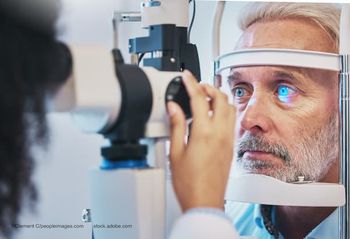
Effect of Open-Angle Glaucoma Medications on Ocular Surface
Transcript:
Sahar Bedrood, MD, PhD: Ocular surface disease (OSD) is a very common, if not the most common side effect or complaint from patients using glaucoma medications, especially the effect of benzalkonium chloride (BAK). How do you address this in your patients?
Joseph F. Panarelli, MD: That’s a tough question to answer because there are patients that complain about OSD and then there’s the OSD that just bothers me when I actually have to look at the eye. I’m always worried that these patients are going to need surgery down the road. And when that surface looks beat up, when that surface looks rough, I’m concerned about how my glaucoma surgery is going to do.
It’s actually quite hard sometimes to correlate what the patient feels with what we see on examination. I have plenty of patients who look like they have a good amount of OSD and who are quite happy. And on the flip side, I have people who are miserable despite what I think is okay-looking OSD. But I think in general glaucoma specialists are more aware of ocular surface health, and we’re doing more and more to try to improve the satisfaction of our patients. We’ll treat blepharitis more aggressively, we’ll treat dry eye more aggressively.
One of the biggest reasons our patients have difficulty is the medications, the toxic medications that they’re pouring on their eye. We know that certain classes of medicines tend to aggravate the ocular surface more than others. I personally am a big fan of preservative-free medications, whether it’s preservative-free timolol or preservative-free dorzolamide-timolol; or even preservative-free tafluprost. I think that these medicines are a little bit nicer on the ocular surface.
In terms of their efficacy, I think they’re comparable to a lot of our standard medications. The issue is the availability of these medications. As we talked about before, cost and availability of medicines is definitely a big deterrent as to why we don’t actually write scripts for a good number of these medications.
Dr. Bedrood: What are your thoughts about the limitations or the benefits of using preservative-free medications?
Dr. Panarelli: Preservatives, unfortunately, are a necessary evil. While we would like to have all of our medications in a preservative-free form, it’s just not going to happen. I think a lot of the medications that we have out there are good medications. They work for our patients. And I will honestly say, some of my patients who have a new vial every day actually are not always the happiest. Some of the patients who have that one bottle are actually happier than some other patients. So while I think preservatives are an issue, and it would be nice to find a better preservative for some of our different classes of medications, I think this is what we have.
Dr. Bedrood: What effect do you think do you think the topical medications have on the ocular surface disease?
Dr. Panarelli: Each of the individual medicines can have an effect on the ocular surface, as well as the preservative itself. In terms of which medication classes give me the greatest cause for concern with regard to ocular surface health, it’s the alpha-2 agonist (ie., brimonidine). That is often one of the medicines that I find causes a lot more ocular toxicity compared to some of the other medications that I tend to prescribe daily.
In general we know that all of our medications are going to have side effects. Prostaglandins have issues with hyperemia, we have issues with periorbital fat atrophy. With our beta-blockers we have some systemic side effects that can be troubling. Alpha-2 agonists can often lead to a follicular conjunctivitis. Topical carbonic anhydrase inhibitors can lead to some burning and some bitter tastes. Whatever medicine it is, there are often going to be some side effects, and it’s all about trying to find the balance of that efficacy that we get from the medication with its safety and adverse effect profile.
Even speaking to our newer medicines - with netarsudil, we do see some hyperemia with that medication, and as well with latanoprostene bunod. So I think we have to try medications. We have to try to see what kind of efficacy we get, and we have to see, is it a problem more for us or is it a problem for our patient?
I have plenty of patients who have a significant amount of hyperemia when I examine them. But when I ask them how do their eyes look, they say, “My eyes look fine, doc, my pressure is great, I’m going to keep using this medicine.” So I think there are things that bother us and there are things that bother the patient. But in the end, our goal is to make sure that that pressure is within the range that we want it to be, and the range that’s going to keep the patient from losing vision. And if that means that they have to tolerate some side effects, then so be it. I think it’s exciting to have newer ways to deliver drugs that might minimize some of these side effects and it will remain to be seen how well these medications work.
How can some of the limitations be overcome by the newer pharmacologic agents in the pipeline or submitted for approval?
Dr. Bedrood: These newer agents that are coming out really aim to do dropless therapy, which basically saves the ocular surface from all of those medications and preservatives. And I think certainly it addresses it. That’s the goal with these medications, not only to have a medication that is local, that works well, that is in low dose, but one that is not affecting the conjunctiva, and the eyelids, and the cornea in the same way that we currently are using our drugs. There is a great avenue for improving our IOP reductions, and certainly patient compliance won’t be an issue because devices or implants are already be placed in the eye, so the patients don’t have to actually do them every day.
Dr. Panarelli: Do you see patients still taking topical medications when they are receiving some of these newer medications that are going to be delivered via either intracameral injection, or via ocular inserts? Do you think that we will still need topical therapy?
Dr. Bedrood: I think glaucoma is a tricky disease to treat, and it would be too idealistic to say, “Oh, these things we’ll put it in the eye and nobody needs another drop again.” The truth of it is it may help reduce IOP in some patients where patients don’t need to use any drops. But it may not, and we may need other medication, and we may need surgery, may need laser, may need any and all of these things. But I think this is an avenue in the right direction for progress and frankly speaking, I’m very excited about it.
Dr. Panarelli: I think that’s the biggest question for me: with a lot of these new drug delivery modalities is the fact that it is still a single drug. And whether or not we can get the desired efficacy we want when we have a patient who’s on multiple classes of medication. That does remain to be seen at this point.
But I think one of the nice things we saw from the Phase III, bimatoprost SR data is that there were a good number of patients who were on multiple classes of medication who were actually able to maintain a reduction in their pressure at the same level when they were solely being treated with bimatoprost SR.
Thank you Dr. Bedrood for your participation in this insightful discussion. And thank you to our viewing audience for joining us during this Ophthalmology Times presentation on open-angle glaucoma. We hope you found this presentation to be useful to your clinical practice.
Newsletter
Don’t miss out—get Ophthalmology Times updates on the latest clinical advancements and expert interviews, straight to your inbox.



















































.png)


